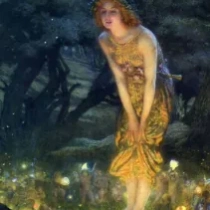 1851 - 1914
pre-raphaelites
1851 - 1914
pre-raphaelites
Description Edward Robert Hughes R.W.S.
Edward Robert Hughes, born in 1851, painted dreams with a brush dipped in ethereal hues. A protege of the Pre-Raphaelites, his artistic journey unfolded in the mystical corners of Victorian England. Hughes, often dubbed "The Last of the Pre-Raphaelites," cast a spell on canvas, marrying Romanticism with a delicate touch of symbolism.
Trained at the Royal Academy, Hughes was an apprentice to William Holman Hunt, a key figure in the Pre-Raphaelite Brotherhood. His early works, like "April Love," bore the hallmarks of the Brotherhood's ethos—meticulous attention to detail, vibrant colors, and a devotion to medieval and mythological themes.
Hughes' artistic repertoire transcended the boundaries of traditional genres. His mastery of watercolor, exemplified in "The Valkyrie's Vigil," mirrored the delicate translucence of his dreamlike visions. His fascination with Celtic and Arthurian lore wove a rich tapestry where reality melded with fantasy.
As a Symbolist, Hughes' art often carried allegorical undertones. "The Shrew Katherina" and "Night with Her Train of Stars" are visual poetry, inviting viewers to decipher the enigmatic narratives concealed within the canvases. Hughes' women, often portrayed with an otherworldly beauty, became vessels for the artist's introspective musings.
Despite his association with the Pre-Raphaelite spirit, Hughes adapted to the evolving artistic currents of the late 19th century. His works transitioned from the meticulous detail of early Pre-Raphaelitism to a softer, more atmospheric style that echoed the Aesthetic movement.
Hughes' life was a blend of artistic dedication and personal challenges. His commitment to his craft, even amidst health struggles, solidified his place in the artistic lineage. The moniker "The Last of the Pre-Raphaelites" encapsulates not just his chronological position but his role as a torchbearer of a romantic and mystical aesthetic.
Edward Robert Hughes' legacy lingers in the enchanting realms he painted—a realm where dreams are captured in pigments, where the veils between reality and imagination are gossamer-thin. In the whispers of his brushstrokes, Hughes remains an elusive dream-weaver, beckoning viewers to immerse themselves in the lingering magic of Victorian reverie.
Gallery
Paintings Edward Robert Hughes R.W.S.
F.A.Q Section
"Midsummer Eve" (1908): An enchanting and dreamlike scene depicting fairies dancing in a moonlit forest.
"The Valkyrie's Vigil" (c. 1910): A painting inspired by Norse mythology, featuring a Valkyrie standing guard over a sleeping warrior.
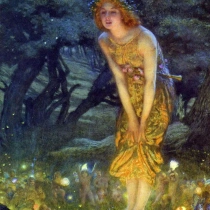
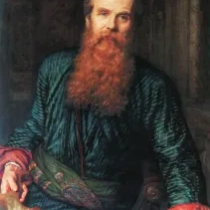
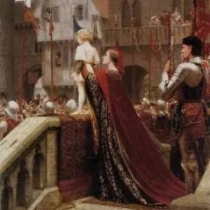
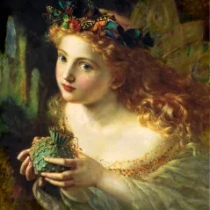
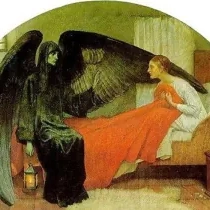

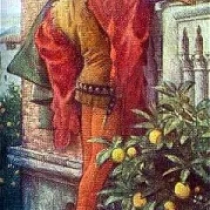
No Comments Yet...